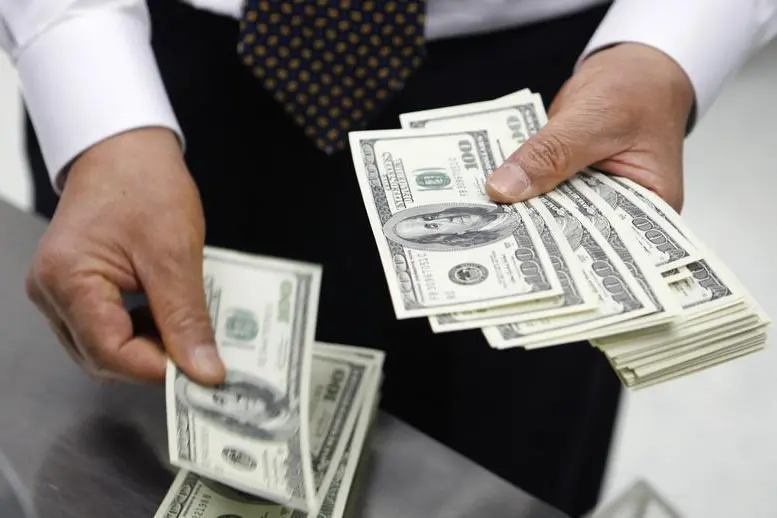PHOTO
(The opinions expressed here are those of the author, a columnist for Reuters.)
ORLANDO, Florida - As implied U.S. interest rates revisit their cycle highs from last year and bond yields break out to fresh 2024 peaks, stocks may be at risk of getting vertigo.
Yet the safety net, if required, could also come from the fixed income world - bond market volatility.
Or more precisely, the lack of it.
A calm bond market is critical to the well-being of all markets, as all borrowing costs, from consumer credit cards to corporate debt, are referenced against Treasury yields. Higher volatility generally forces investors to demand a higher risk premium, which lifts the discount rate on all financial assets.
The ICE BofA MOVE index of implied U.S. Treasury market volatility last week fell to its lowest in two years. It has picked up a bit this week as bond selling has accelerated, but remains well below where it was last October when the 10-year yield was shooting up to a 16-year high of 5.00%.
This relative calm may quickly evaporate if inflation fears intensify, in which case a drawdown in stocks would almost certainly follow. And Wall Street is primed for a cooling-off period - the S&P 500 and Nasdaq are at all-time highs, having surged as much as 30% from their October lows.
But if yields are being lifted by stronger growth more than bubbling price pressures, equity investors can feel reasonably confident that pullbacks will be shallow and short-lived.
"If uncertainty about the Fed evaporates, confidence creeps back in. The 'soft landing' views align, bond volatility falls and investor sentiment rises," says Jeroen Blokland, head of research at investment research platform True Insights.
Strategists at Bank of America note that on average since 1929 the S&P 500 has had 5% daily pullbacks three times a year and 10% corrections once a year. The index has not had a 2% pullback in over 100 trading days, so a meaningful drop is probably due soon.
But that would only provide more attractive levels to add exposure. The longer-term view - solid economic growth, promising earnings, disinflation and rate cuts on the horizon - remains the same.
"Not to forget, the settle down in bond volatility that kept us on our toes last year," they wrote in a note last week.
PLACEBO EFFECT
Rates volatility has been on a downward path this year, despite nearly 100 basis points of implied rate cuts being wiped off the 2024 U.S. rate futures curve and the 10-year Treasury yield rising around 50 bps.
The upward repricing of Fed expectations and bond yields has failed to stop the equity juggernaut, with the S&P 500 and Nasdaq both advancing around 10% in the first quarter.
Contrast this with market dynamics last year. In October the 10-year yield had reached 5% and stocks were down 10% from their July peak, yet although the economy was still humming along nicely, bond market volatility was elevated.
Fast forward five months and stocks are up 30% from the October lows, GDP growth is still running above potential, yields are rising but bond volatility remains reasonably well anchored.
This suggests growth expectations are driving yields.
"The danger is when stocks fall in line with bonds, a sign that inflation and interest rate uncertainty is rising." warns Bob Elliott, CEO at Unlimited Funds and former executive at Bridgewater.
For the equity market to really weigh down on the economy, the 10-year yield might need to rise another 100 basis points, Elliott reckons. That would smash through October's 5.00% peak and obliterate current Fed rate cut expectations.
There is a view that nominal bond yields and implied Fed rates don't hold much sway over stock markets beyond the short term. The same can perhaps be said of bond volatility too.
Since the Fed first raised rates in March 2022, the MOVE index has been structurally and consistently higher than the preceding two years. Yet the S&P 500 is up 25%, and bear in mind stocks slumped 20% in calendar year 2022.
Even the Fed's policy rate may not influence Wall Street as much as people believe. If it did, Wall Street wouldn't currently be hovering near its highest levels on record.
"Unless hikes are back on the table or they're cutting to try to stave off a recession, it basically doesn't matter beyond the placebo effect," hedge fund trader and Behavioral Macro blog author Mark Dow this week posted on X, the platform formerly known as Twitter.
(The opinions expressed here are those of the author, a columnist for Reuters.)
(By Jamie McGeever; editing by Christina Fincher)





















